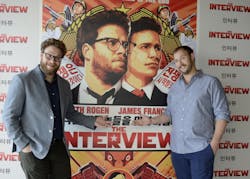Sony Hack Attack: Do We Need a ‘Safe Mode’ Reboot Option for the Grid?
“No one should kid themselves. With the Sony collapse America has lost its first cyberwar. This is a very very dangerous precedent.” So Twittered Newt Gingrich following Sony’s cancellation of the movie “The Interview” – a farcical comedy about the assignation of North Korea’s dictator.
First Sony’s email had been hacked and all sorts of embarrassing tidbits spilled into the media. Something like 11 terabytes of data was sucked out.
That wasn’t enough to stop the film’s release. Then came the anonymous threats to blow up any theaters that showed the film. Sony backed down amid both praise and criticism and the media talk shows are fed plenty of fodder for the holiday dead period. Even Obama and members of Congress got sucked into the frenzy.
Talk about a big kerfuffle! You can do a lot of things to America and we remain calm – but mess with Hollywood and you’ve crossed the line!
The odd paradox is that high tech made the cyberattacks possible, but common technology and the internet also makes it impossible to keep the film from the public. There are already parts of the film available on YouTube and you can bet there’ll be plenty more. Out of curiosity I’m going to go look at a few clips after writing this.
Email, data centers and servers – why can’t we go back in time a bit? Generate less data, need fewer passwords, be less vulnerable to snooping?
Why can’t we have a power grid that is usually very smart but when threats are on the horizon we can reboot into a ‘safe mode’ and have a retro, more secure system?
We sort of do this already when we ‘island’ load centers following major regional generation loss. So why not have the option of going to strictly local control to protect against hacking? System operators could still coordinate at something less than the speed of light by using the phone.
Just like we did in the 1950s.
Of course, we have more stakeholders now, what with the reduced vertical integration of generation and delivery and the plethora of independent power producers. So we’d have a little less reliability, a little more risk of operational mistakes. But we could still figure out how to live without smart systems when the risk of power system hack attack is high.
Worth discussing anyway – because we certainly don’t want the next cyberwar to be lost fighting for the power grid.



